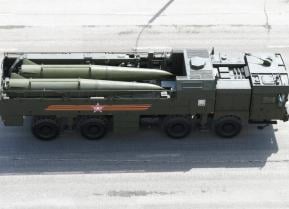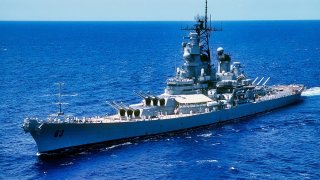The U.S. Navy's Montana-Class Battleship Dream Was Really a Nightmare
The Montana-class battleships - planned but never built - represent a bygone era of naval power. With their formidable armament and heavy armor, some suggest bringing them back or such an idea for such a warship amidst concerns over anti-access/area-denial (A2/AD) threats posed by nations like China
Summary: The Montana-class battleships, planned but never built, represent a bygone era of naval power. With their formidable armament and heavy armor, some suggest bringing them back or such an idea for such a warship amidst concerns over anti-access/area-denial (A2/AD) threats posed by nations like China. However, the efficacy of such behemoths in modern warfare is questioned. A2/AD capabilities, exemplified by China, pose significant risks to surface warships, rendering even the mighty battleships vulnerable. The escalating use of drones in conflicts like the Ukraine War further underscores the challenges faced by large surface vessels. Despite their historical allure, the Montana-class battleships may remain impractical in today's contested maritime domains.
Montana-class Battleships: Reviving an Old Concept in Modern Warfare
During the Second World War, the United States Navy possessed a fleet which had some of the world’s most powerful and most sophisticated (for their time) battleships in the world. These were known as the Iowa-class battleship—and they served the United States on-and-off from the 1940s until 1992, when the last battleship was decommissioned. Today, there are still calls to bring these warships, which are currently museums, back into service. But the US Navy was designing an even larger, more powerful, and sophisticated battleship to succeed the Iowa-class.
That was the Montana-class battleship.
While these glorious battlewagons were never built due to the fact that by 1943, it was obvious to most naval planners that the aircraft carrier had displaced the battleship as the Navy’s premier weapon in its arsenal of power projection.
The Montana-class was Almost Built
For almost 80 years, the carrier has ruled the high seas as the US Navy’s primary capital ship. Yet, America’s enemies have not sad idly by, watching the Americans sail the seven seas aboard their floating airbases. American rivals have judiciously devised strategies for negating the potency of America’s aircraft carrier fleet. This has become known as “anti-access/area-denial” (A2/AD).
China, Russia, Iran, and North Korea are all in possession of advanced A2/AD capabilities (notably China). These systems threaten the very existence of any US surface warship—especially America’s massive and expensive aircraft carriers—that gets within range of these weapons.
The Navy knows that its warships are vulnerable.
Chinese A2/AD Threatens Safety of US Navy Warships
No matter how great the ship’s onboard defensive systems are, China’s A2/AD swarms are designed to overwhelm those defenses. They don’t need to sink the US warships. They just need to disable them to such a point that they become wasting assets in a fight.
Some analysts are looking for ways to retain power projection in a contested, A2/AD environment. This brings us back to those calling for the recommissioning of the four remaining Iowa-class battleships. But what if the US Navy looked to building (and updating) its old design concepts for the Montana-class battleship?
After all, the Montana-class was originally designed to have 12, powerful 16-inch guns and even heavier armor than what the Iowa-class battleships had. The Navy had more plans to add truly potent 18-inch guns that could fire shells weighing over 2,000 pounds at enemy targets. Coming in at 64,000 tons, the Montana-class battleships would have been the biggest battleships in the US fleet if they’d been commissioned.
Eighteen-inch armor and massive guns sounds pretty good in the age of A2/AD defenses. The Montana-class battleships could take—and dish out—a serious pounding. The only problem is that, even if they were upgraded with modern weapons and equipment, the Montana-class battleship would be out of its proper time.
Contested Domains Today
Because the problem facing surface warships today is not that some are more capable of fighting—and surviving—in the contested battlespaces of A2/AD-wielding powers than others. The real issue is that the swarming capabilities of A2/AD means that no surface warship can really survive a protracted engagement with these systems.
Modern warfare among near-peer rivals is going to be fought increasingly at greater distances from previous wars. That’s not to say the surface ships are obsolete. But until the A2/AD threats to them are neutralized, they are wasting assets, whether it be America’s current fleet of expensive and large aircraft carriers or the possibly resurrected Montana-class battleship.
Further, another reason opted to not follow through on its plans to build these battleships was because of the cost involved in maintaining them. They were fuel guzzlers and required much maintenance.
These systems, therefore, would not be helpful today.
Beyond that, large surface warships are already being shown to be increasingly ineffective. The Ukraine War, which has entered its second grueling year, has demonstrated how surface warships are poorly defended from sophisticated drone attacks. The Russian Black Sea flagship, the Slava-class battlecruiser, the Moskva, was sent to the bottom of the Black Sea by the Ukrainian drones. Similar attacks have been conducted against other Russian surface ships in the Black Sea.
Learning from the Russian Example
The point is that the mighty Russian battlecruisers cannot hold up against the kinds of systems being referred to in this piece. While American warships are more advanced and their crews better trained than the Russians, it does not negate the fact that US warships operating within an A2/AD “bubble” will likely suffer a similar fate as did the Moskva.
Sure, a modern variant of the proposed Montana-class battleship might be able to operate in a contested environment—and even open it up—because of its added armor and larger weapons platform. Ultimately, however, the law of numbers will sink those warships as readily as US aircraft carriers will likely be damaged or destroyed by Chinese A2/AD systems.
The Montana-class should stay on the drawing board.
About the Author
Brandon J. Weichert is a former Congressional staffer and geopolitical analyst who is a contributor at The Washington Times, as well as at American Greatness and the Asia Times. He is the author of Winning Space: How America Remains a Superpower (Republic Book Publishers), Biohacked: China’s Race to Control Life, and The Shadow War: Iran’s Quest for Supremacy. Weichert can be followed via Twitter @WeTheBrandon.


